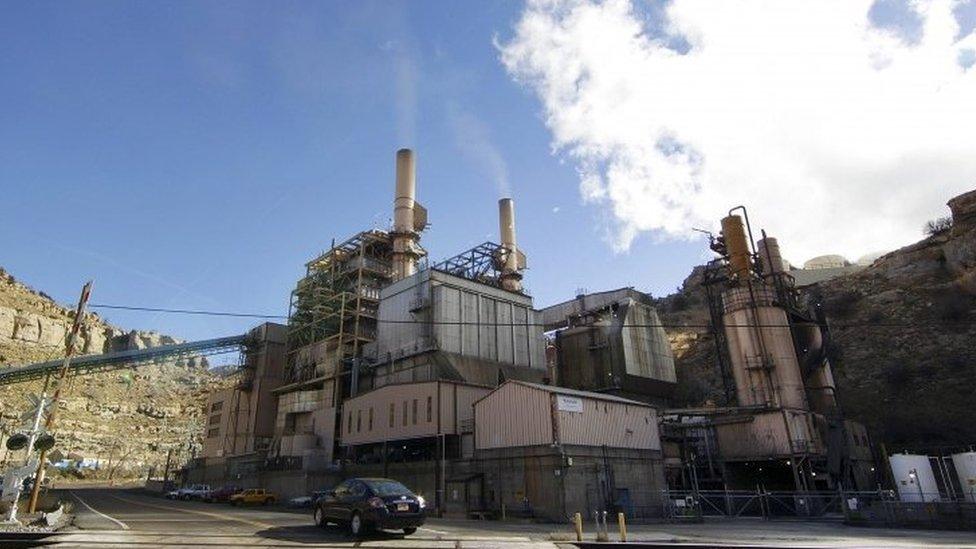What does President Obama's climate change plan do?
- Published
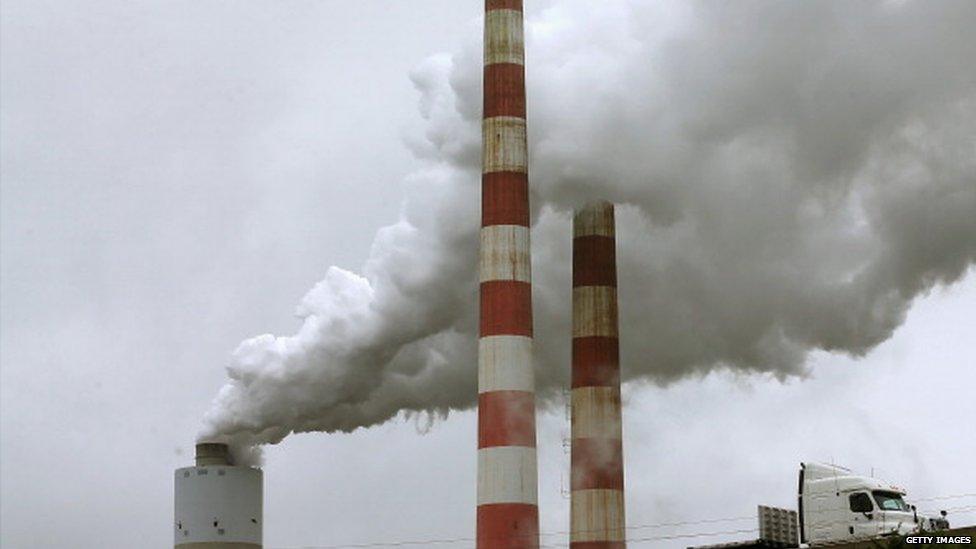
Global carbon dioxide concentrations have reached unprecedented highs
President Barack Obama has announced sweeping climate change regulations that he hopes will cement his legacy as a world leader who fought global warming. The revised Clean Power Plan aims to cut greenhouse gas emissions from US power stations by nearly a third within 15 years, but opponents say the policies are a "war on coal".
We have broken down what exactly the deal does, how and by when:
The deal at a glance
What exactly does this plan do to combat climate change in the US?
The Clean Power Plan sets standards to reduce carbon dioxide emissions by 32% from 2005 levels by 2030, which is 9% more than the proposed rules previously set forth by the Obama administration.
How does it do that?
It sets carbon pollution reduction goals for power plants and requires states to implement plans to meet goals. States have until September of 2016 to submit plans, but can take more time if needed, and must comply by 2022. The original date of compliance was 2020. If states do not submit their own plans, the government will provide them.
Why are some US states opposed to this plan?
Some US states have robust coal power plant economies, like Wyoming, West Virginia and Kentucky. Their leaders worry that if coal plants cannot do what they have always done, state economies would suffer, people would be laid off and the government would be overreaching.
Why else does the US want to reduce carbon emissions so badly?
Mr Obama will travel to Paris in December to discuss a global carbon emissions reduction deal. The Obama administration believes the US plan will boost the process in Paris and encourage other countries to submit their own plans.
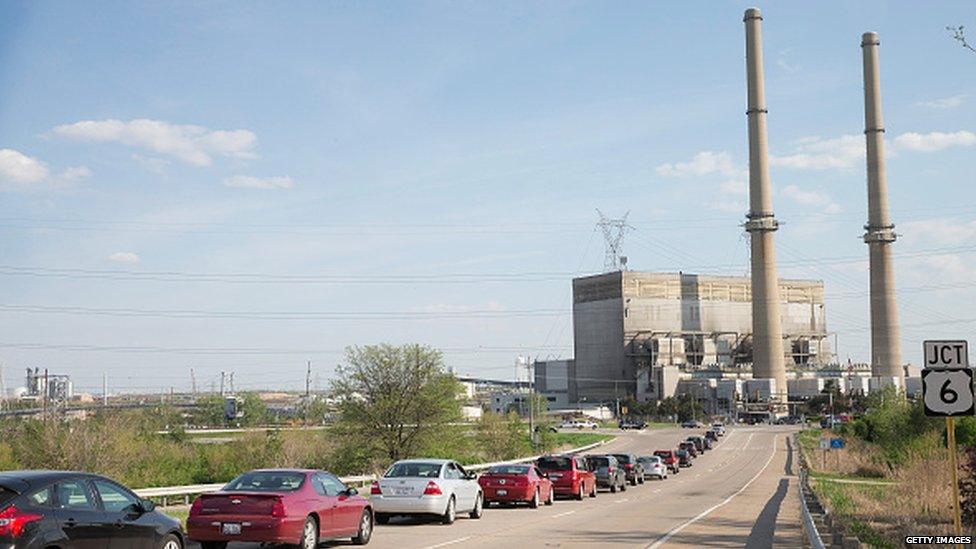
The new rules require every US state to have a plan for reducing CO2 emissions
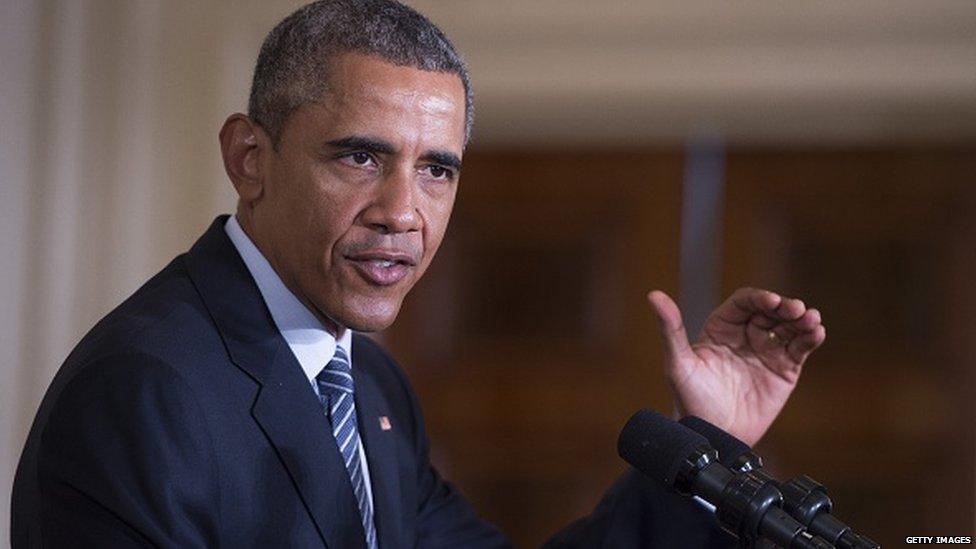
Mr Obama said arguments against the proposal are inaccurate and "scaremongering"
More on the deal
More details from Leigh Paterson, a Wyoming-based reporter for InsideEnergy, external, a publicly funded energy-specific news organisation, on the specifics of the deal:
Why is the political debate around this energy deal so hot?
Even before this rule was released, it was highly controversial. Several states threatened to sue before it was even finalised. Utility companies say power bills will go up and that the plan will make the US uncompetitive. But market forces are shifting toward renewable sources of energy. There is a greater interest in them and prices are going down.
It comes down to [people perceiving the rule as] the federal government overstepping boundaries-when it comes to the "war on coal". There is some truth to it.
So it is not just power plants contributing to coal's demise?
What some folks leave out of the discussion is that the coal industry is suffering from a variety of forces - a combination of low natural gas prices, a falling demand for coal and the fact that it is getting more expensive to mine. To equate the Clean Power Plan with the "war on coal" is not telling the whole story. It will certainly decrease coal consumption, but it is not going to completely destroy it.
How will individual states deal with their requirements?
Each state has different emission reduction targets. The plan suggests states comply with "building blocks". Some states have said they will not comply, promising to sue.
There are a lot of parallels [between the Affordable Care Act and the Clean Power Plan] in that they are both highly controversial, and the Affordable Care Act survived its legal challenges largely intact. This is the time for the final push for legacy initiatives.
Is the rule too ambitious? What does it leave out?
This rule is important and historic. It sounds ambitious, and it is ambitious, but what is important to remember is that coal-powered power plants are not the only emitters of carbon dioxide. It does not touch vehicle, industrial, cement or methane leaks. In estimates I have read, [power plants] account for about 30% of carbon dioxide. That's another 70% not being addressed by the Clean Power Act. It is one component of a much broader climate-change agenda, a "kitchen sink" approach.
- Published20 May 2015
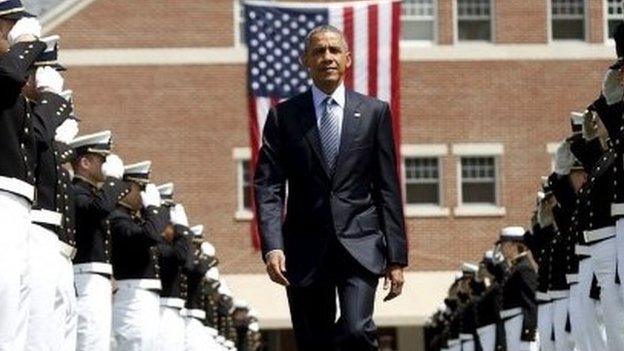
- Published3 August 2015
